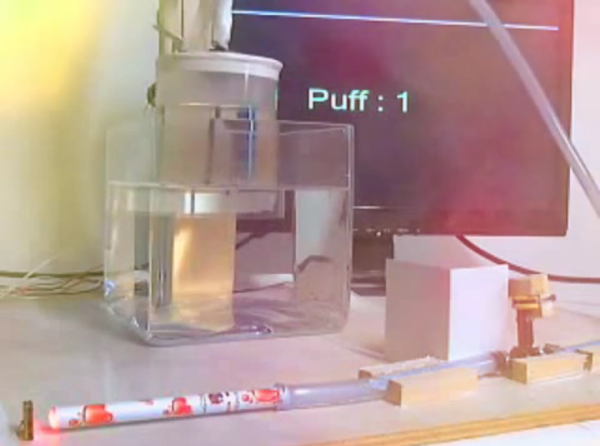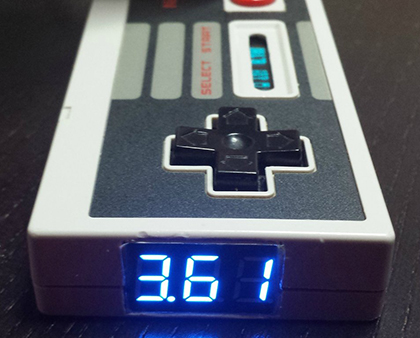Most of us have probably heard the old Tootsie Pop slogan, “How many licks does it take to get to the center of a Tootsie Pop?” [E-Smoker2014] had a similar question about his e-cigarettes. These devices are sometimes advertised with the number of puffs they are good for. [E-Smoker2014] had purchased an e-cigarette on a trip to Belgium that advertised 500 puffs. After a bit of use, he started to suspect that he wasn’t getting the advertised number of puffs in before the battery would die. Rather than just accept that the world may never know for sure, he decided to test it out himself.
There aren’t many details on this build, but you can tell what’s going on from the video below. [E-Smoke2014r] built a machine to artificially puff on an e-cigarette. The e-cigarette is hooked up to what appears to be vinyl tubing. This tubing then attaches to a T-splitter. One end of the splitter is hooked up to a DIY actuator valve that can open or close the port. The other end of the splitter is hooked up to more tubing, which in turn is attached to a plastic cylinder placed in a container of water.
To simulate breathing, the computer first opens the relief valve in the splitter. It then mechanically lowers the plastic container into the bowl of water, pushing out a bunch of air in the process. The valve closes, and the computer then raises the plastic container out of the water. This action creates suction that draws air in through the e-cigarette like a normal user would do with their lungs. The computer increases the puff count and then repeats the process, expelling any vapor out of the relief valve.
The results of the test indicated that [E-Smoker] could only get 59 puffs out of this particular e-cigarette before draining the battery. Not even close to the advertised 500 puffs. Maybe he should consider building his own e-cigarette vaporizer? Continue reading “How Many Puffs Does It Take To Kill An E-Cigarette?”














